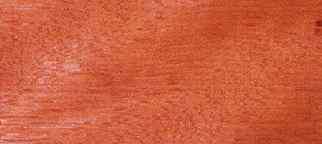
Assila (Parinari holstii)
Family: Chrysobalanaceae
Common names: Assila, Eshagho, Mampataz, Mubara, Mubura, Ofam, Sougue
Distributed in: Cameroon, Ivory Coast (Africa)
Distribution overview: Grows in West Africa.
Environment profile: Data source is World Conservation Monitoring Center
This species is officially classified as Vulnerable within its natural growth range in Cameroon
Tree size: Trunk diameter is 100-150 cm
Colors: the heart isPurple, Red - pale and the sapwoodWhite, Yellow.The grain isFigure, the textureMedium coarse to coarseand the lusterMedium
Natural durability: Very durable, Very little natural resistance
Odor: The odor disappears after the timber is seasoned
The sapwood has a scent of honey when freshly cut
Silica Content:
The wood usually contains very high amounts of silica levels of more than 1% (of ovendry weight) have been reported. A silica content of 0.05% is usually considered to be high enough to affect the machining properties of wood
Kiln Schedules: UK=B
Kiln Drying Rate: Naturally dries slowly
Drying Defects: Resin Exudation, Splitting
Ease of Drying: Variable
Blunting Effect: Moderate
Boring: Fairly easy to very easy
Carving: Fairly Difficult to Very Difficult
Cutting Resistance: Moderate to saw
Gluing: Satisfactory gluing properties
Mortising: Fairly Difficult to Very Difficult
Moulding: Fairly Difficult to Very Difficult
Movement in Service: Fairly Difficult to Very Difficult
Nailing: Pre-Boring Recommended, Pre-Boring is necessary
Planing: Irregular grained material may tear during planing operations
Resistance to Impregnation: Sapwood is permeable
Response to hand tools: Fairly Difficult to Difficult to Work
Routing recessing: Fairly Difficult to Very Difficult
Sanding: Very Good to Excellent Results
Steam bending: Moderate
Screwing: Pre-Boring is required before screwing , Pre-boring recommended; Turning: Very Good to Excellent Results
Polishing: Very Good to Excellent; Staining: Very Good to Excellent;
- Numerical data Metric
- Numerical data English
- Strength properties
- References
| 







